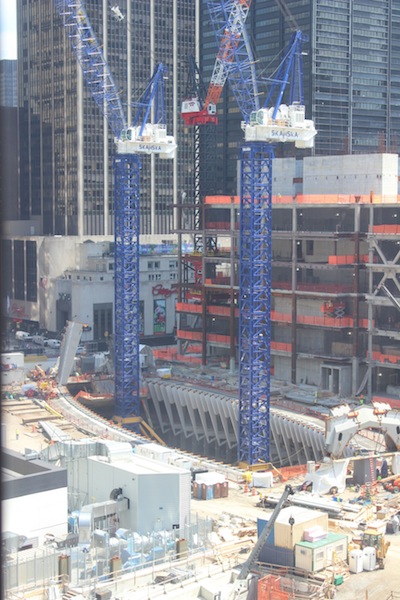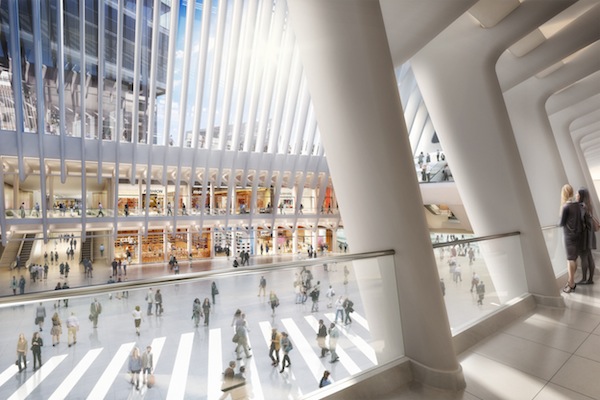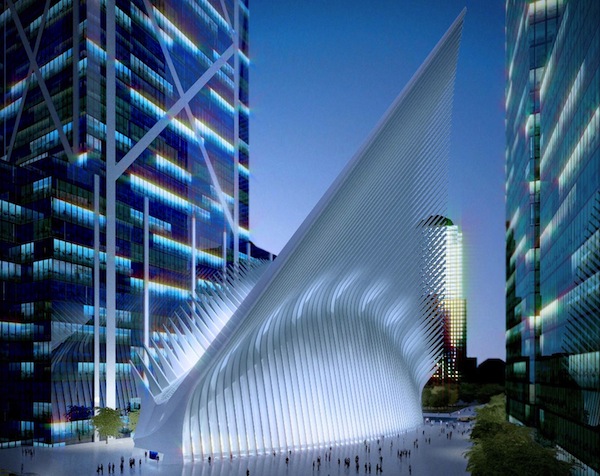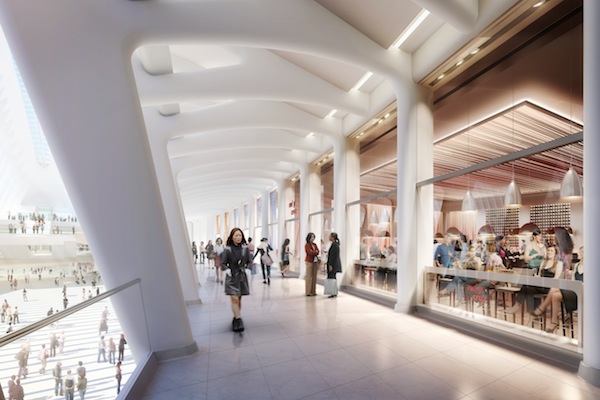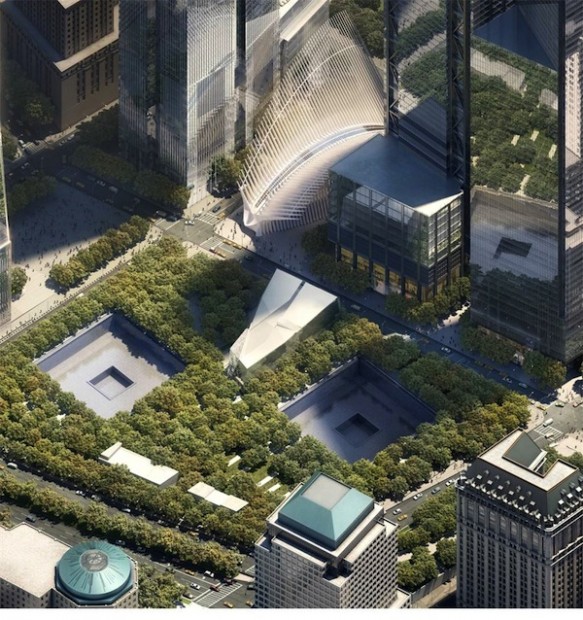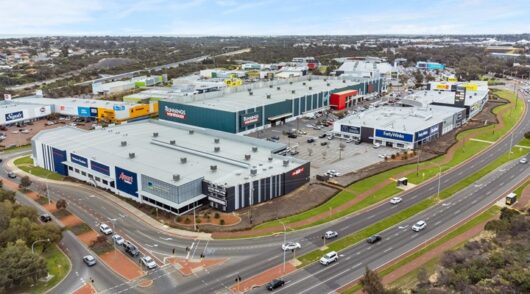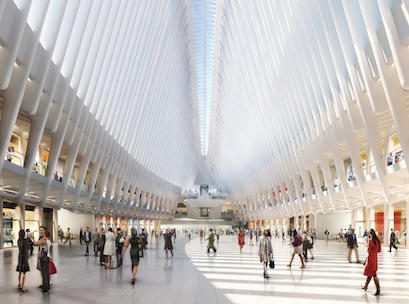 Almost 12 years on from the tragedy that was 9/11, New York’s World Trade Center has begun to rebuild, with the result anticipated to be stronger and more spectacular than before.
Almost 12 years on from the tragedy that was 9/11, New York’s World Trade Center has begun to rebuild, with the result anticipated to be stronger and more spectacular than before.
When the World Trade Center was felled by terrorists, Australian landlord Westfield, had owned the shopping mall beneath the towers for just five months.
Now, with the chance to rebuild the centre as its own, Westfield has unveiled its vision for what is says will be “unique by location, hardware, and design”.
Westfield World Trade Center will be housed in the Oculus, a 200ft tall structure designed by Spanish architect and sculptor, Santiago Calatrava, to resemble the release of a dove from a child’s hands.
The 350,000sqft mall space is interlinked with a brand new transport hub which will run 13 subway lines to the World Trade Center site beneath the Oculus.
Westfield has invested US$625 million in the project, and owns a 50 per cent stake in the development.
“We’re going to put 150 brands in this iconic structure, event it, put in the customer service overlay with a sense of connectivity we have, and that will create a shopping destination,” says David Ruddick, executive director of leasing at Westfield World Trade Center.
“The way we’ve gone about this is to bring the best of what is our Westfield IP and people and combine it with New York culture,” Ruddick said.
“Westfield’s business in the US is interesting. We have 44 shopping centres in the US, and we’re part of the DNA of shopping in America,ut we haven’t been able to create a best global face.
“Our global icon strategy hasn’t hit town and this is our chance to deliver and go beyond what we’ve done before.
“This is our strategy to create. We are going to polarise the island. Having this unique landmark destination of culture, arts, office, and tourism – there’s an enormous market.”
Leasing for the 150 tenancies is at an advanced stage, and is currently oversubscribed.
Anchor tenants were yet to be revealed at the time of print, but rental costs are predicted by some in the US to be around $550 per sqft – on par with typical midtown New York rents.
Size of the prize
The World Trade Center market can be divided into three distinct audiences – residential, office, and tourism.
Each year, 52 million people visit Manhattan, spending US$35 billion. On top of the 52 million tourists visiting the city each year, New York is home to 19.1 million residents, and 450,000 workers, who spend $2.1 billion a year.
If you include the neighbouring New Jersey and Brooklyn markets, retail sales comprise $20 billion.
“It’s all really about the size of the prize,” Ruddick told the Westfield World Retail Study Tour.
“The population [of the World Trade Center catchment] is growing at about 16 per cent until 2017. We’ll be up to 70,000 to 80,000 in this little neighbourhood, but the catchment is really New York as we know it.
“There hasn’t been a compelling reason to come downtown unless you are in the financial sector and you are a worker,” says Ruddick.
The 13 lines servicing World Trade Center will bring 500,000 people a day through the building, migrating to street level. To put this into perspective, Westfield London receives around 30 million visitors a year.
The centre itself
The retail component of World Trade Center is set over three levels above the public transport hub, with two levels below ground. Level two (two levels below ground) will be “our version of editing a collection with a department store philosophy,” explains Ruddick.
“It’s about creating uniqueness through a series of brands and some food in the Oculus that gives what the great department stores like Isetan, Selfridges, Harrods, or Galleries Lafayette would create in editing.
“As you move out the walkway to the Wall St exit, the brands will become a bit more democratic – high street partners will give us a breadth with our positioning to make it relevant.
“If you go entirely into luxury you’ll ostracise part of your customer base, but if you go totally into high street you are going to be missing something, so it’s really a balanced view, and having 150 opportunities, we can do that.”
Overall, this level will be home to a mix of value and convenience retail, signature global brands, international designers, ready to wear, and high street, with a luxury core.
Level one, one level below ground, is expected to receive 180,000 people a day, and according to Ruddick,“it’s more of an organic designer type feel”.
A designer gourmet market will be part of this offering, with gourmet grocery highly sought after in NY.
On the level above ground, there is no retail around the Oculus, though Westfield owns the retail strata over three levels of the office towers, which is where tier one luxury flagships will be placed across the façade, as well as “one of our great global iconic high street brands and alfresco restaurants”.
“This leads through Portland Way which is a walkway to really activate it, and above that we’ll have a dining room which is an evolution of London, Bondi, Stratford, and Sydney, seating about 1000 people.”
In terms of food, the centre will house around 15 ‘grab and go’ style food retailers, as well as a dining terrace with 360 degree views.
Tower four of the World Trade Center development will house three to four sit down restaurants, with all food to have a focus on New York chefs and restaurateurs.
Challenges
Despite the prestige, scope, and opportunity of the Westfield World Trade Center, it is not without its challenges, Ruddick revealed frankly to the tour.
“Normally, we create the vision, the architecture of the building, and it’s design, but we haven’t had that opportunity here,” said Ruddick.
“We’re really retro-fitting a shopping centre in someone else’s design and editing a collection in it. That’s a challenge because it wasn’t really designed as a shopping mall.
“So we got rid off the word mall, we got rid of the word shopping centre – it’s a hub. We are placing a series of edited shops and making them stand out from a brand equity position.”
Deals were conducted very early on, with the last deal to be made at least 12 months ahead of its 2015 opening as a result of the design, procurement, and labour process of such a large scale project.
Lead times are some of the longest Westfield has ever dealt with – shopfronts ordered more than two years ago are now being delivered onsite.
Blue ribbon service
Steve Roche, GM of the project, says the new Westfield World Trade Center will have “the next level of service’ even on Bondi, Sydney, and London centres”.
“The digital integration is immensely important to us. We’re working through with our Digital Labs team looking at our next generation on services and integrating with our retail,” said Roche.
“Whatever we do it needs to be very functional and purposeful – less about the frills and bells and whistles – it needs to have a utility function to it.”
Some of these services will include deliveries to surrounding offices from food and beverage retailers, messenger and booking services, a concierge, and community outreach and events.
The Oculus includes a 30,000sqft open public space to be used for events, which also features a series of public plazas around the exterior, able to be used for food and wine festivals and other arts and cultural events.
Fashion brands will also have the opportunity to host runway shows at the space.
This story originally appeared in Inside Retail Magazine’s August/September 2013 edition as part of our exclusive coverage on the 2013 Westfield World Retail Study Tour.
Inside Retail Magazine’s December/January issue, featuring Inside Retail Magazine’s annual Shopping Centre Developments Guide 2014 is available now. For more information, click here.

